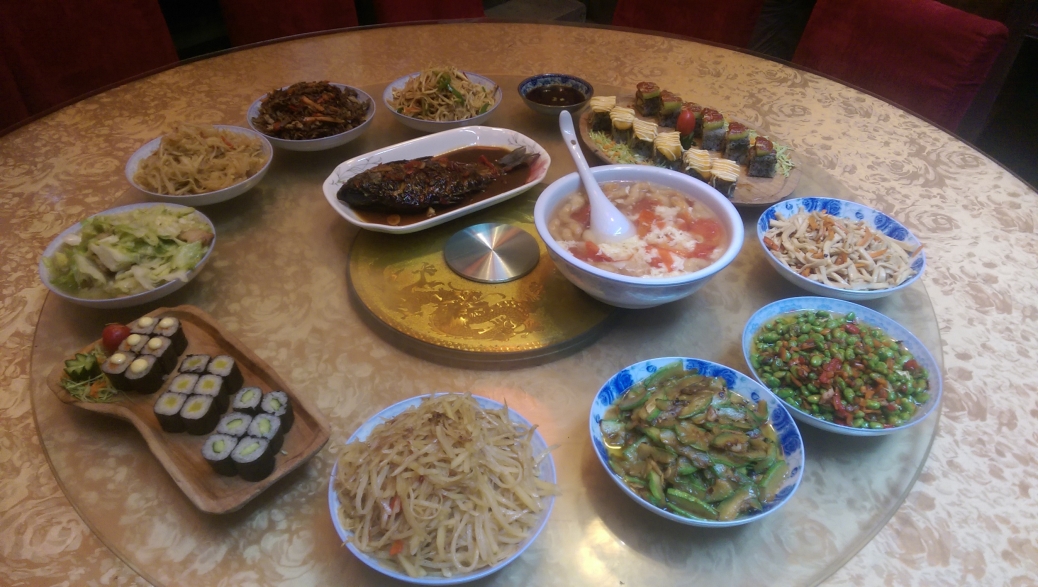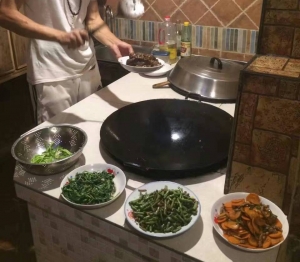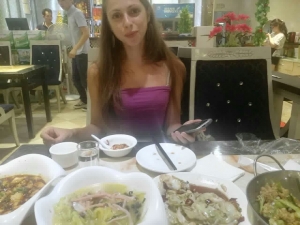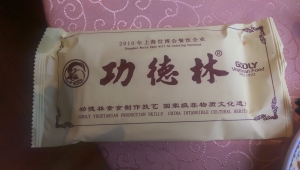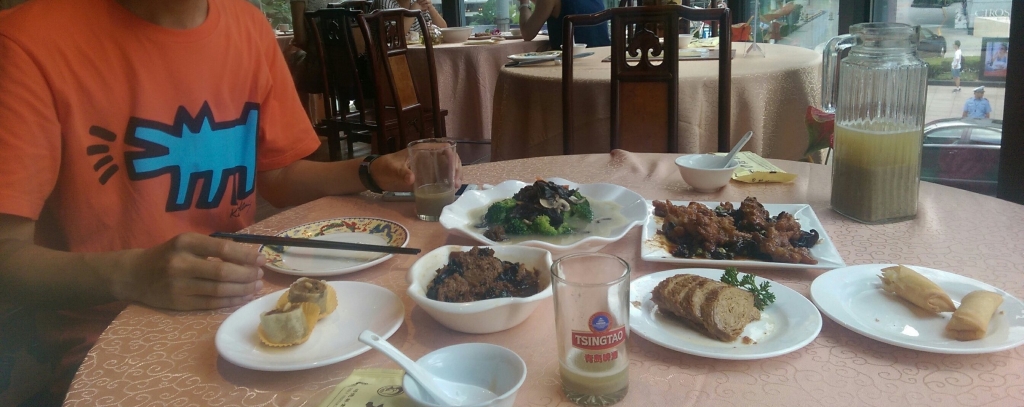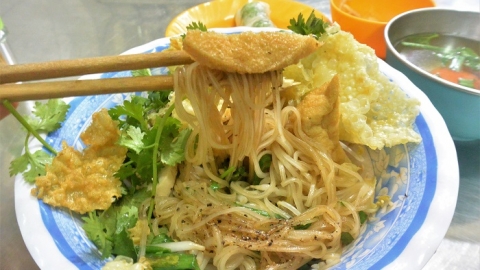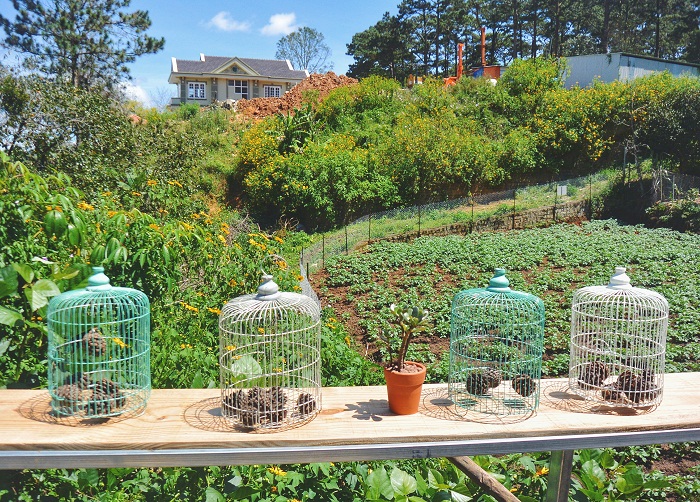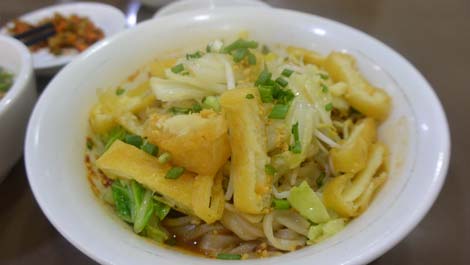Eating vegan in China is easier than expected. Dairy is not part of traditional ingredients so, unless you pick a westernized place, there will almost be no risk of incurring in any. Eggs are easy to avoid while getting meat-less dishes is slightly more difficult. Before going into details, a quick overview of a typical Chinese meal might help.
Meals have a deep cultural meaning, both for the family and the enlarged society. Being Italian, I found the topic extremely fascinating and close to my national reality. However, this is not the place to discuss it. I’ll just say that Chinese eats properly give the idea of sharing. The only personal serving is the rice bowl while all the rest of the food –what you are supposed to eat rice with- is put in the middle of the table, often on a spinning plate so that anyone can easily get to everything. The number of these shared dishes usually is around two per tablemate and everything is eaten in one comprehensive course. Everyone just picks what she/he wants from the plates –not a portion but just what chopsticks can carry- in the middle and possibly mixes it with her/his own rice. Dessert is not common and sometimes sweets are served together with the main courses.
So, when in a restaurant, the norm is a huge common order (around 2 or 3 dishes per person) comprehensive of meat, fish, tofu, soups and a lot of vegetables cooked in the most delicious ways. It’s easy to go for the many apparently veg options…if only pork weren’t mixed with almost everything. It is an easy fix though, underlying a clear “without meat” (in Chinese) during the order will allow for any dish to be made veg without any issue, everywhere. So you won’t have to give up those majestic feasts that are often seen in the larger tables.
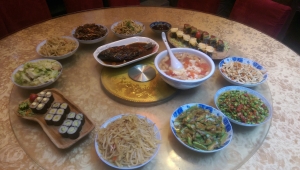
Here is an example…ehm, sorry for the terrible quality of the pictures – they were not taken thinking about sharing them. This one below is of a meal for two made specifically vegan for me. From left to right: ma-po tofu (silky tofu dripping with a red spicy sauce); something I really don’t remember; super-flavory lettuce with chilly and sweet and sour sauce; (my favorite) stir-fried cauliflower with another incredibly flavory soy-based sauce.
This veganization thing is applicable to any restaurant and I would recommend not to fear trying the less appealing to tourists ones. These are often street-level, not necessarily neat and family-run. Every single one I tried was worth the dare and owners and staff’s enthusiasm for having a foreign customer made each meal a pleasure. Menus are hard to find in English but many have pictures. Anyways, just asking for the house to choose for you has always been rewarding, underlying you don’t eat meat, fish or eggs or specifying an ingredient you’re particularly fond of.
Still want a purely vegan restaurant? Veganism is new to Chinese culture and there is no one word to explain it. However, some traditions contemplate it. The restaurant “Godly” (don’t ask for the Chinese name, I don’t know it) – kind of popular in Shanghai and expanding in other cities – is a wonderful outcome. It’s a century old and has more than one location in Shanghai. I tried the one close to People Square and was shown its old tradition in the impeccable Chinese serving. The menu spells meat-based dishes, from an infinity of duck varieties to pork. In reality, everything is unbelievably plant-based. The cuisine is Shanghainese so loaded with sweet and sour gravies – be prepared. Despite the serving and the exclusive atmosphere, eating here is more than affordable. Needless to say, food is awesome here! (I’m sorry the only “gadget” I got was the one you can see up here, it spells the name of the restaurant if it might help – it usually pays to show Chinese names to get directions while lost in finding places, nobody knows the Westernized versions)
I cannot remember what we ate but I saved a picture of the meal for two we got (up here). It was during a hot and moisty summer so we chose a fresh drink based on green beans. It’s a popular option for cooling down, slightly sweet, and I welcomed it in any warm day.
To sum up, I hope I gave the right tips and the idea that being vegan in China is way easier than expected – besides it not being culturally common. Just mind the pork that is sprinkled anywhere and dare, it is indeed in China that I had the best culinary experiences (besides Italy, of course). It might be useful to learn how to say “I don’t eat meat/do not add meat” (wo bù chi ròu/ méiyou ròu …but I guess this doesn’t help with the pronunciation) and be smart in avoiding eggs. I’ve been traveling China for six months, trying to visit remote ares and live off food offered in exchange for labour: it worked perfectly and everybody was happy to plant-based feed me!
Feel free to contact me if you’re approaching Mainland China and hope this helped. For more, you can check on my blog: An Italian Wild Foodie

